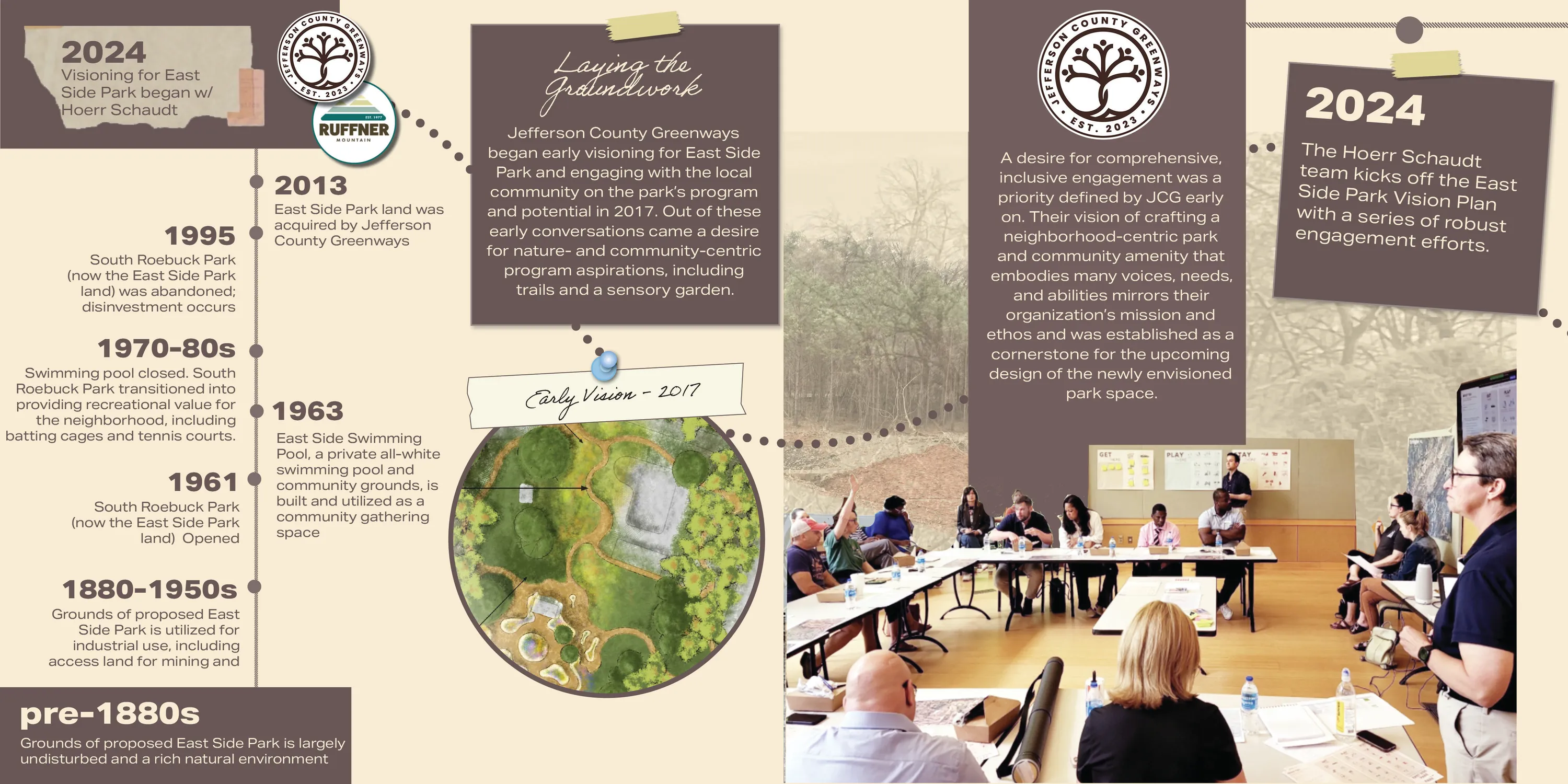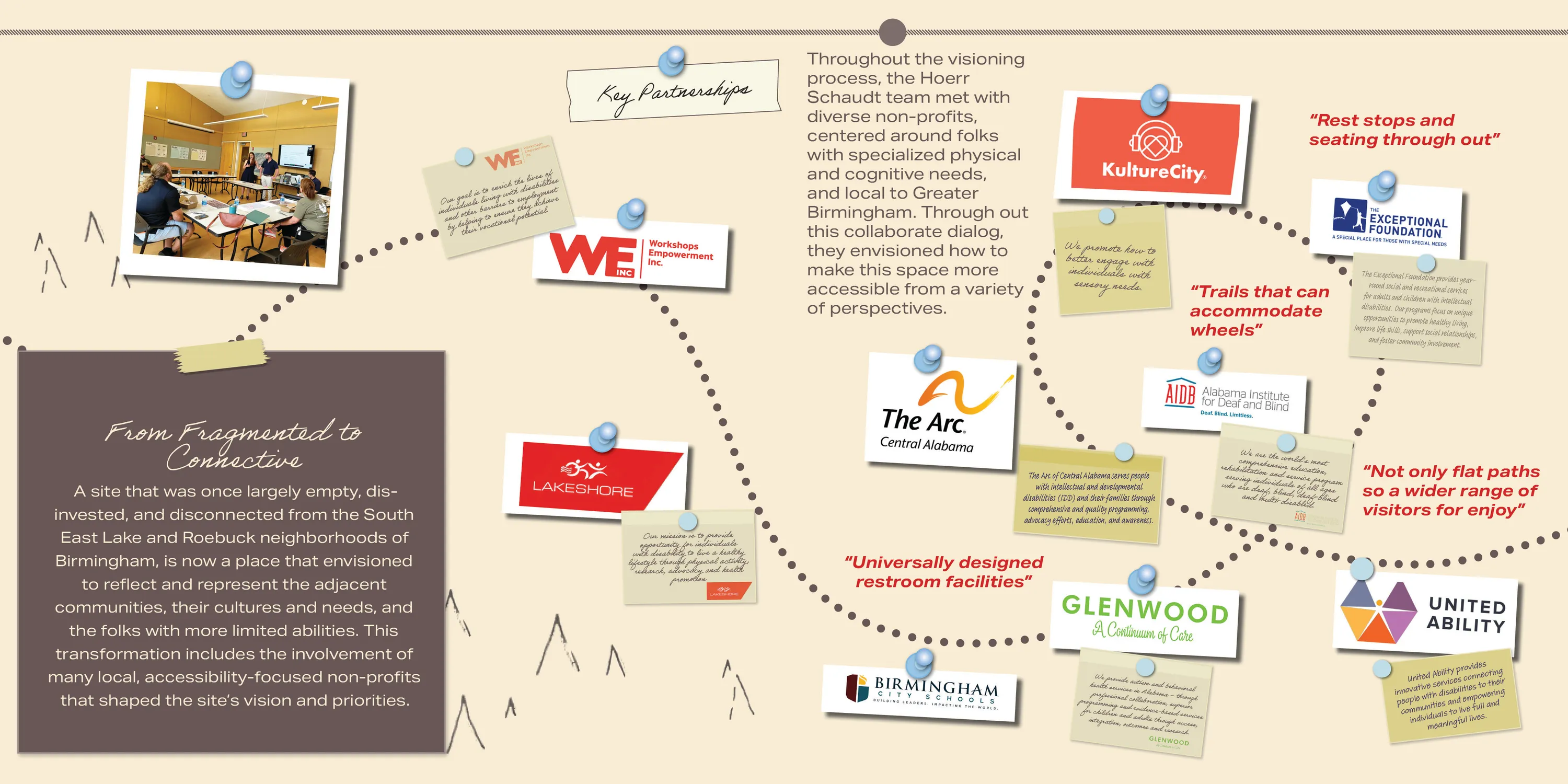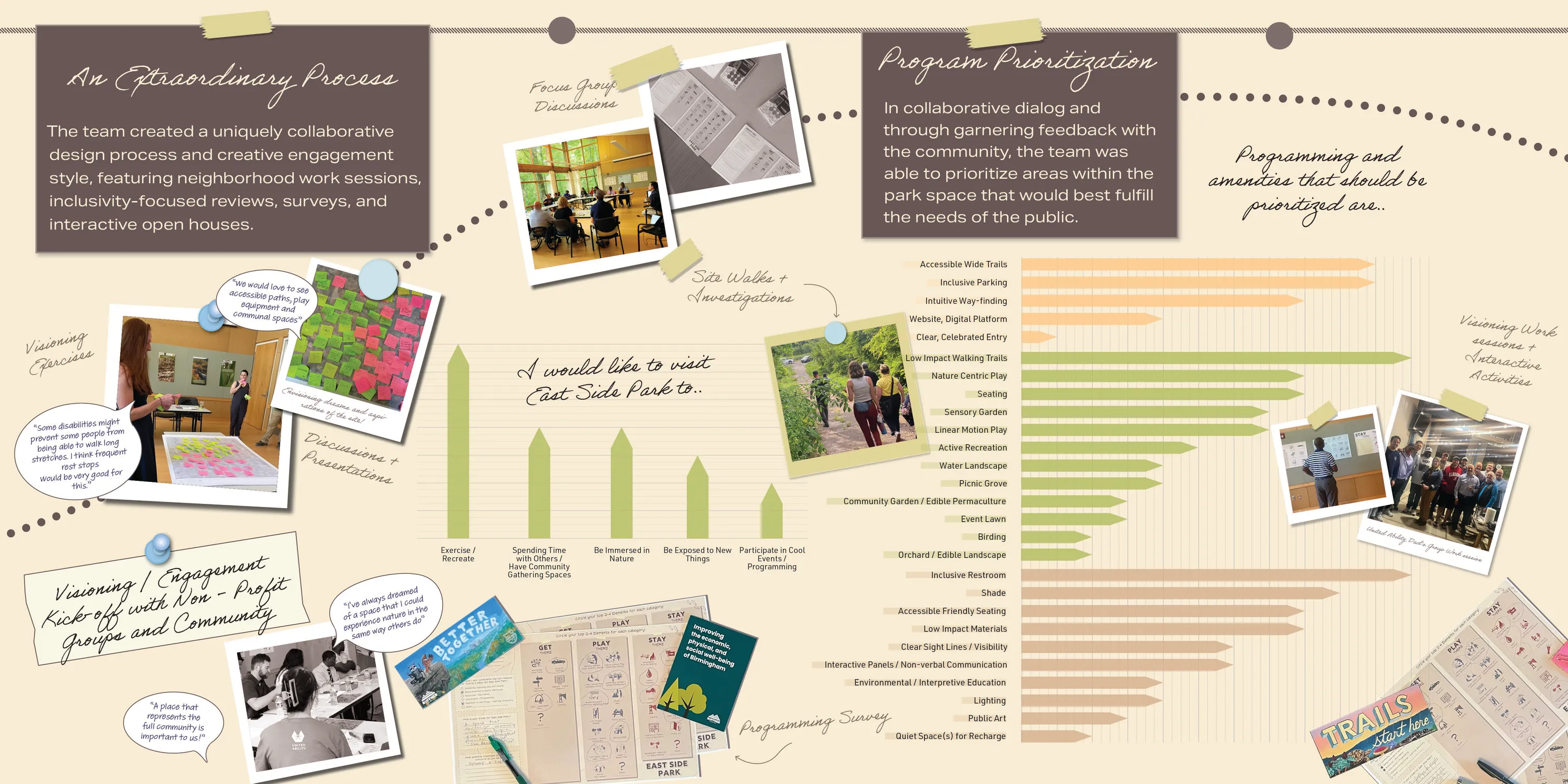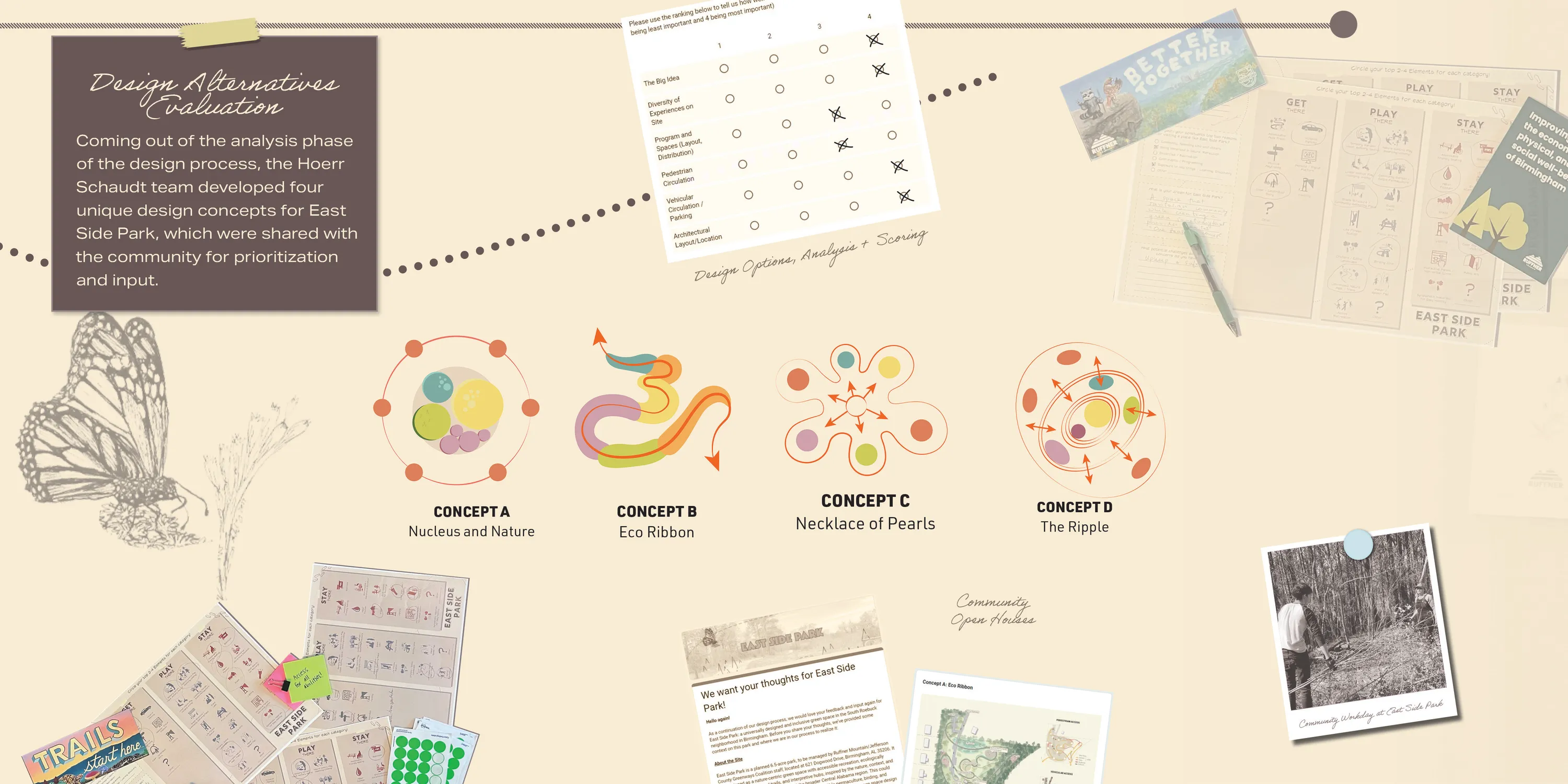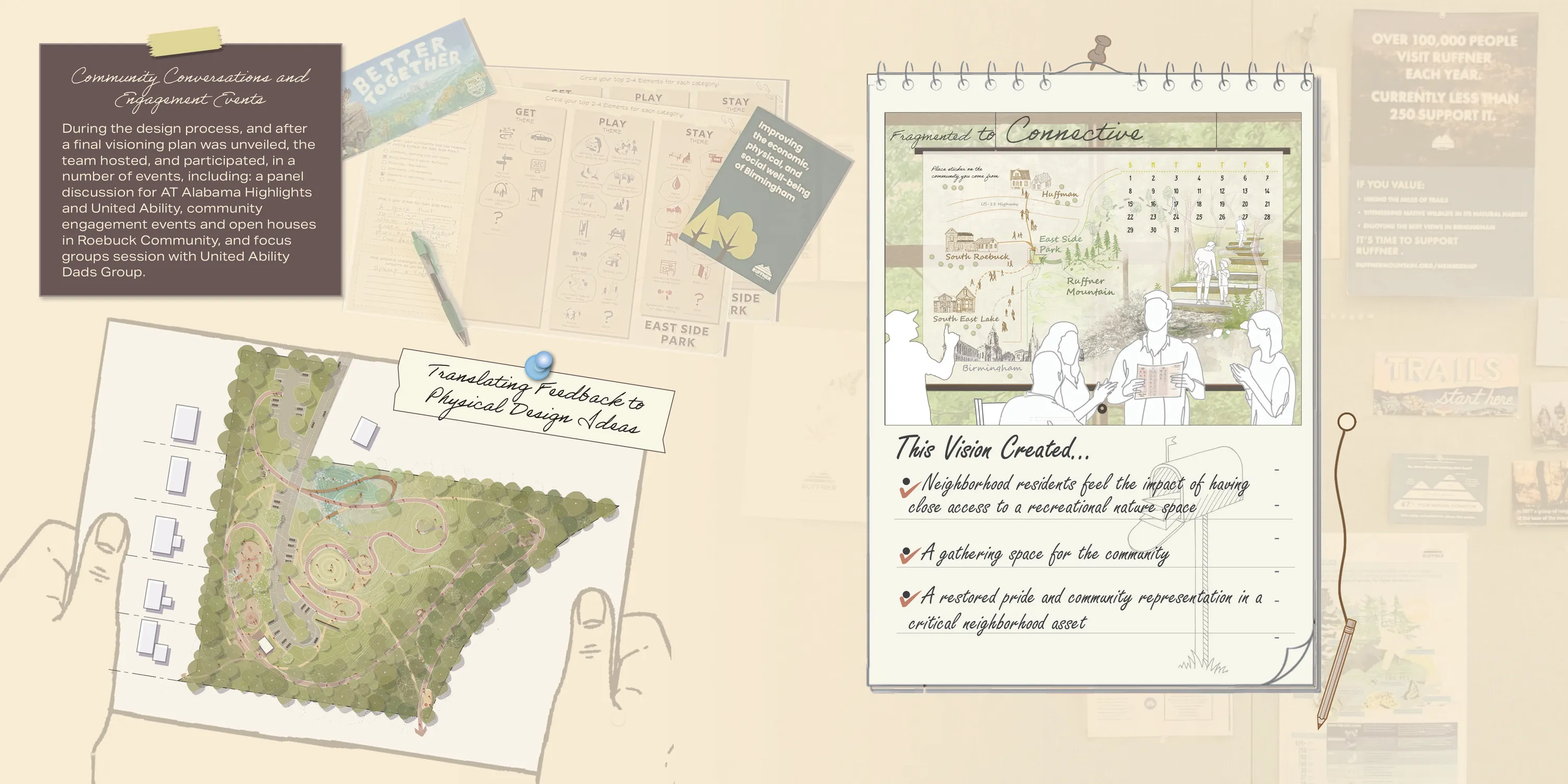East Side Park, located in Birmingham, AL, is a 6.5-acre planned civic space with the highest aspirations for inclusive design thinking to guide the planning, engagement, programming, and design of the park. Led by Hoerr Schaudt and managed by the Jefferson County Greenways and Ruffner Mountain Nature Coalition, the park aims to connect people of all abilities to nature and ecology, play, and sensory engagement.
Hoerr Schaudt’s public engagement efforts for East Side Park began in May 2023 with a stakeholder feedback session. Representatives from Lakeshore Foundation, United Ability, Exceptional Foundation, Kulture City, Glenwood, and the Alabama School for the Deaf & Blind participated, along with the local City Councilor and Chief of Staff. Attendees shared insights on what makes parks accessible and inclusive, both from successful and unsuccessful experiences. Hoerr Schaudt facilitated a discussion on how individuals navigate, stay, and engage in park environments. A follow-up survey was distributed to attendees and their networks, with results shared to inform the design process.
Once the master plan was completed, it was presented to city leadership and neighborhood representatives.
In October, the team participated in a panel discussion at AT Alabama, an assistive technology conference hosted by United Ability. The panel included Elizabeth Kaufman, who led the development of a universally designed playground in Auburn, Alabama. Discussions compared design challenges and incorporated stakeholder feedback into planning.
Community outreach continued with a neighborhood meeting in Roebuck Springs, where residents viewed the design, provided feedback, and engaged in discussion. A follow-up survey was distributed via social media to gather additional input.
In November, the team presented the design at a United Ability Dads Group meeting, engaging directly with attendees to refine key elements that would make the park more welcoming and accessible to their community.
These collaborative efforts ensure the park is shaped by the people it serves, reinforcing its role as a dynamic and welcoming public space and underscores a commitment to democratic design, where public spaces are shaped by those who will use them most.
